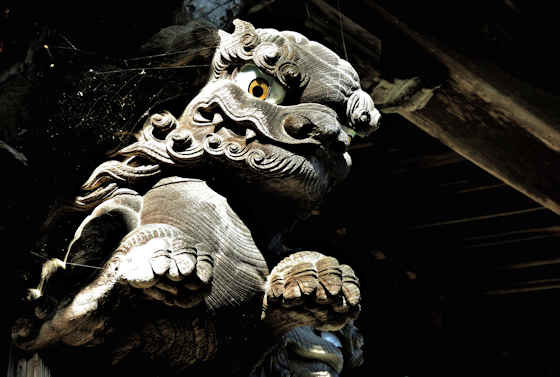Kakaji is a town on the north side of the Kunisaki peninsula, and the Hachiman Shrine is te main shrine of the town.
The approach to the shrine crosses a stone-arched bridge across the Takeda River.
Built in the mid 19th century, this type of bridge was rare in the area.
The shrine is set in a forest of pines, and its main feature is an impressive two-storey gate.
One of the komainu guarding the approach is unusual in that it is standing upon a turtle. I can't remember having seen that before.
The main gate has numerous relief carvings.
Many sources suggest the gate may have been built in the late Edo period, but the late 19th century is more likely.
The gate houses two Zuijin, Shinto guardians.
They are unusual in that they are carved out of stone, not wood. I have seen other stone zuijin in the Kunisaki area, but not elsewhere.
The shrine was established in the early 8th century, before the Hachiman cult spread to the Kinki region with its connection to the founding of Todaiji.
It is one of 5 "betsugu" of Usa Hachimangu. Bestsugu is often translated as "branch", but the relationship is stronger and more direct than that. Maybe "annex" would be more accurate.
As a Hachiman shrine it is now considered to enshrine Ojin, his mother Jingu, and a consort.
The three Munakata "sisters" are also enshrined here.
I visited at the end of my second day walking around the Kunisaki area following the old Kunisaki pilgrimage trail while starting the Kyushu Fudo pilgrimage. The previous post was on my
walk from Oreki Temle to Kakaji.


































































